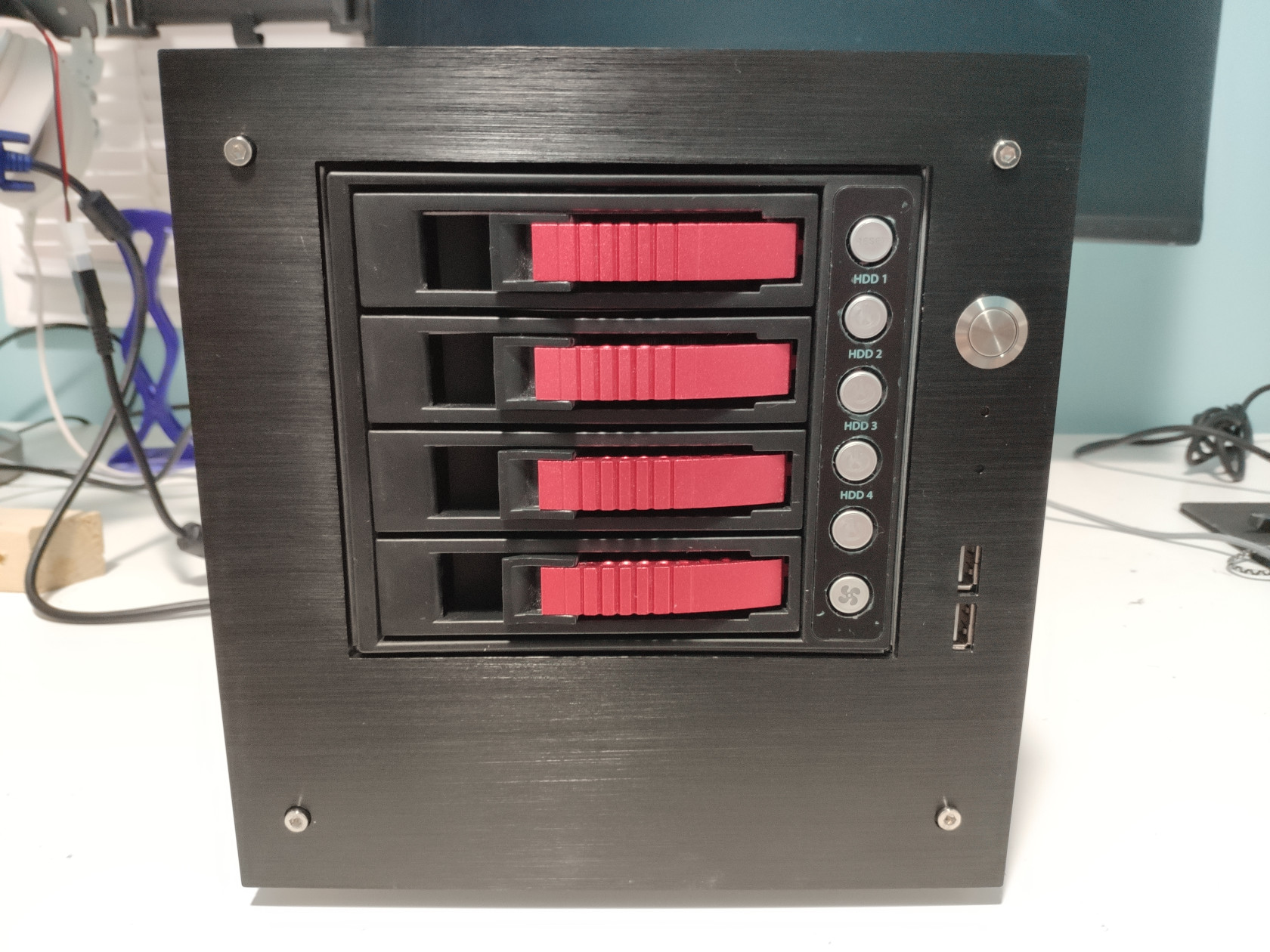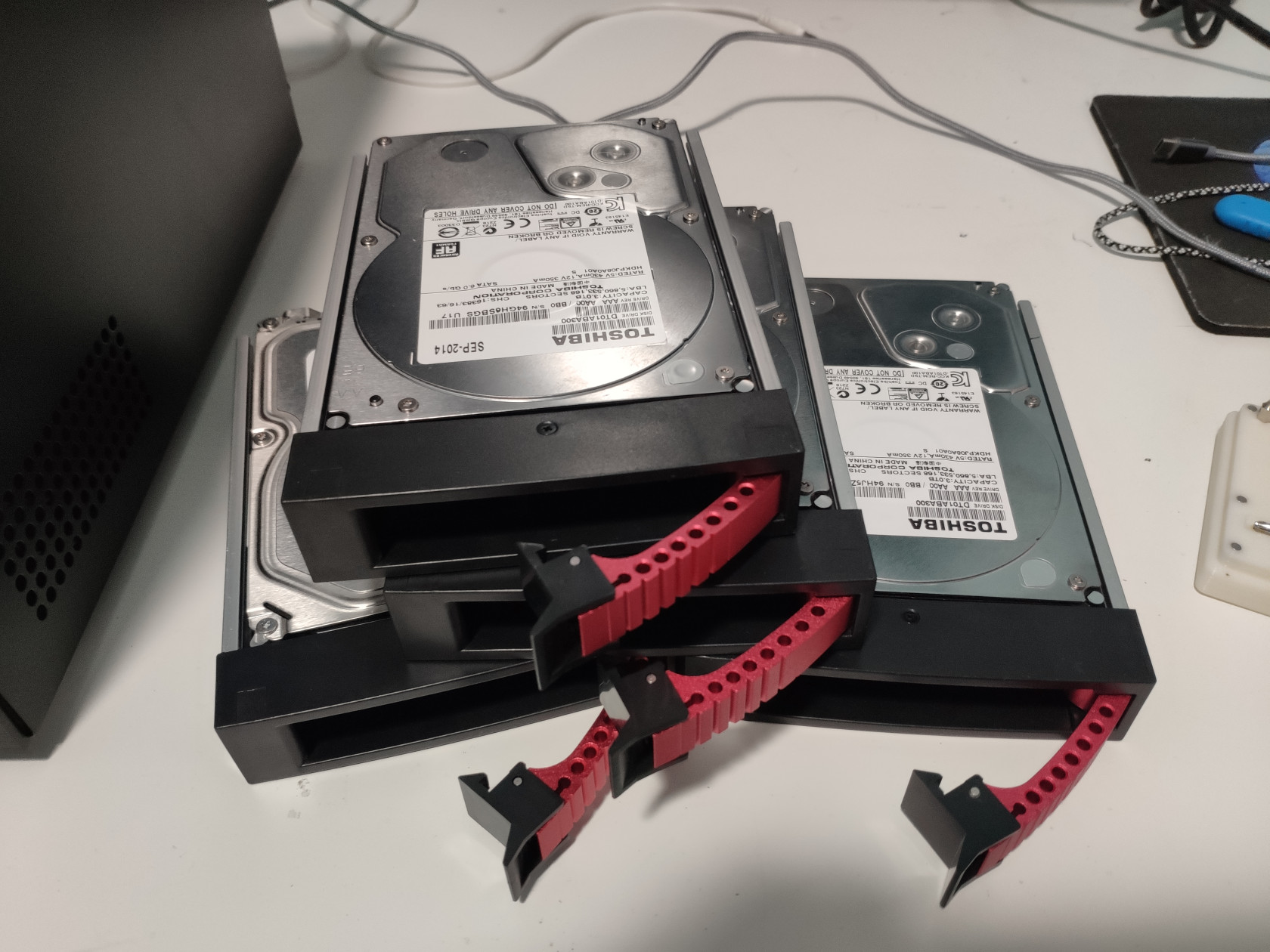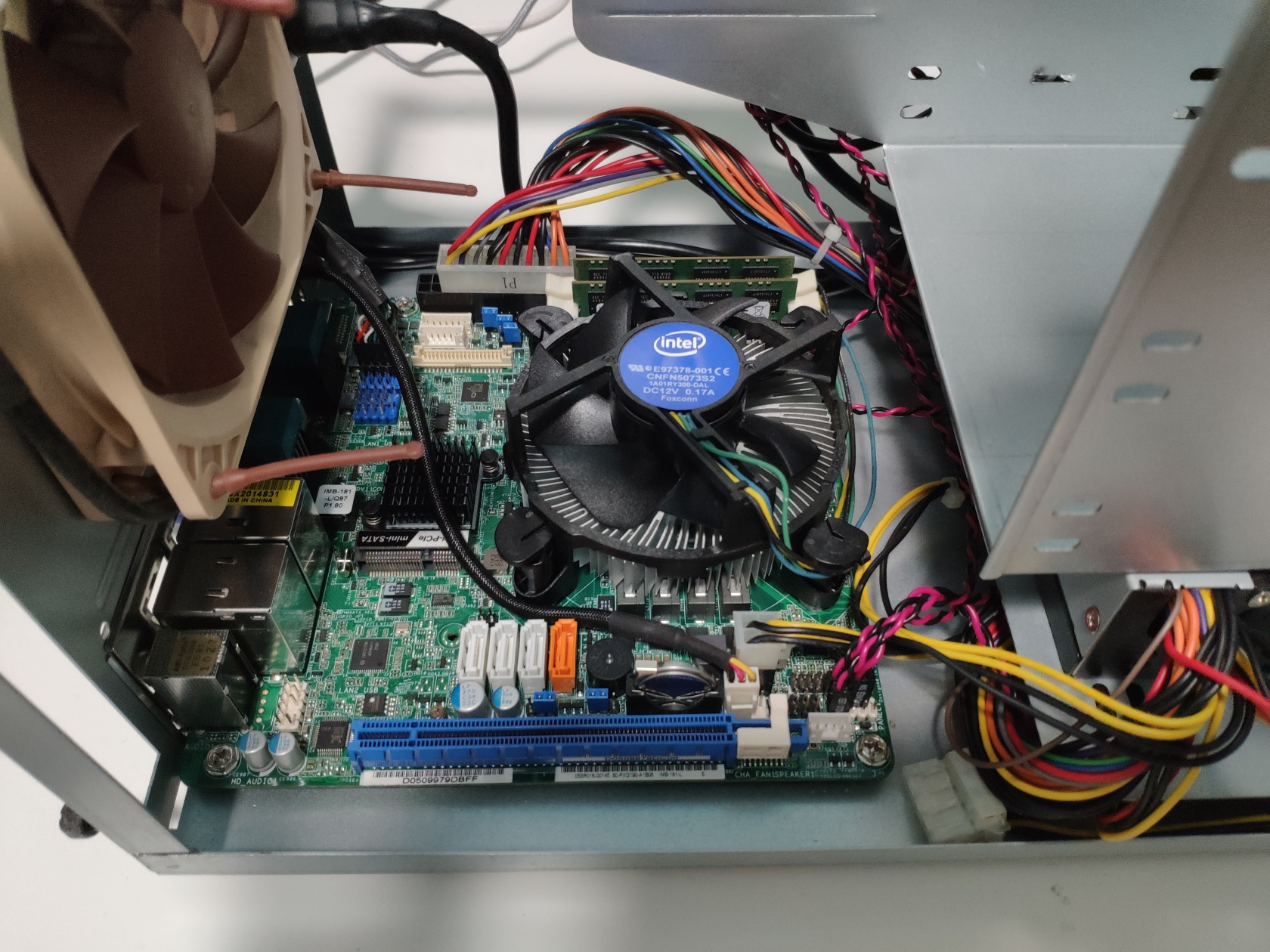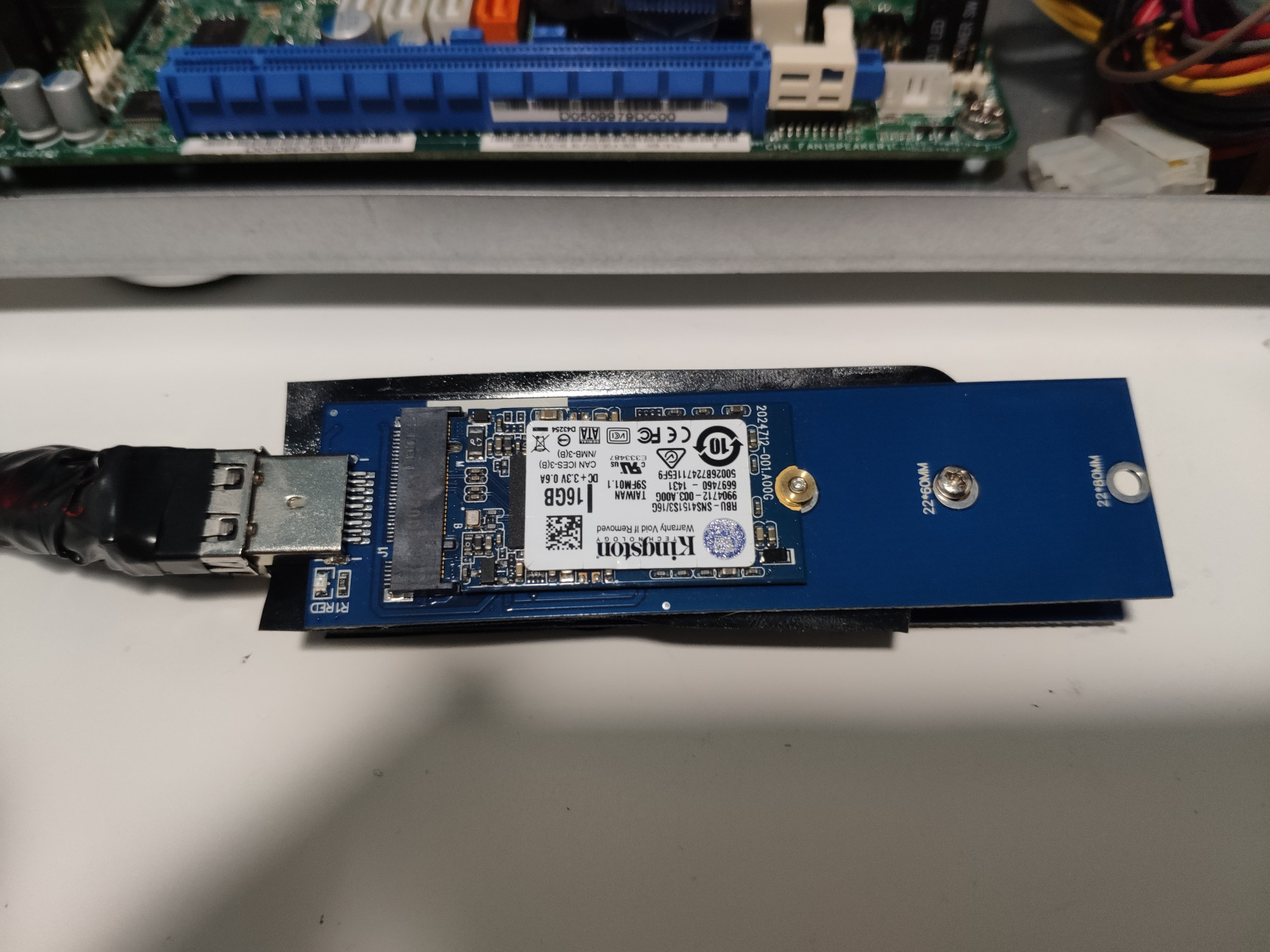Hardware Consideration
TrueNAS CORE can run on just about any hardware. iXsystems have a very detailed hardware guide over on the official documentation for TrueNAS. The key hardware considerations you should keep in mind are as follows:
- 8GB or more RAM
- TrueNAS have a high RAM requirement due to the ZFS filesystem. ZFS uses the RAM as read cache to speed up system performance, so the more RAM you have, the better.
- No Hardware RAID Controllers
- TrueNAS needs direct access to the drives in order to manage them. Having a hardware RAID controller in the middle will cause all sort of issues with TrueNAS.
- Two or more USB boot device
- TrueNAS can boot off an USB storage device so you don’t have to waste a SATA port for the boot device.
- TrueNAS can be install on two or more boot devices in a mirrored RAID for redundancy.
- I highly recommend using a small M.2 SATA SSD with an USB adapter like the one below to use as the boot device since SSDs will last much longer than a regular USB flash drive.
- Hot-Swap HDD Bays (Optional)
- Having a Hot-Swap HDD bay will make maintenance a lot easier, especially when you need to replace a drive.




The configuration I have in the pictures above are as follows:
- Intel i5-4590
- Way overpower in my opinion, but it’s the only spare CPU I have laying around
- AsRock IMB-181-L LGA 1150 Mini-ITX Mobo
- Similar to my pfSense build, this is a unique motherboard that uses DDR3 SODIMM, and have two onboard Intel NICs
- Two 16GB M.2. SATA SSD with M.2. USB Adapter
- iStarUSA S-35 ITX Case
- This case is designed with three 5.25″ drive bay so that you can put a hot-swap bay attachment to it
- 4-Bay Hot-Swap Bay
- 180W FLX PSU
